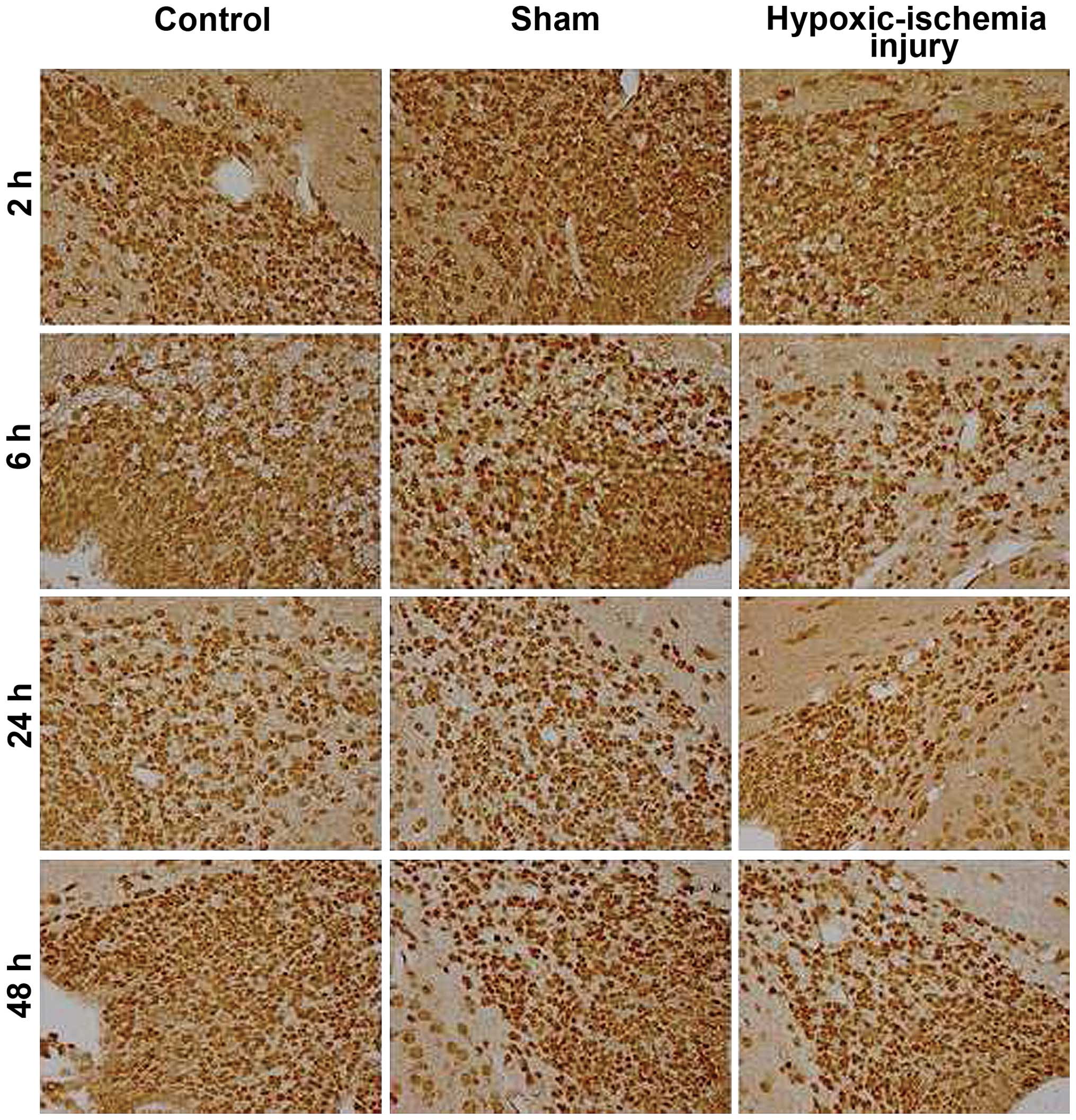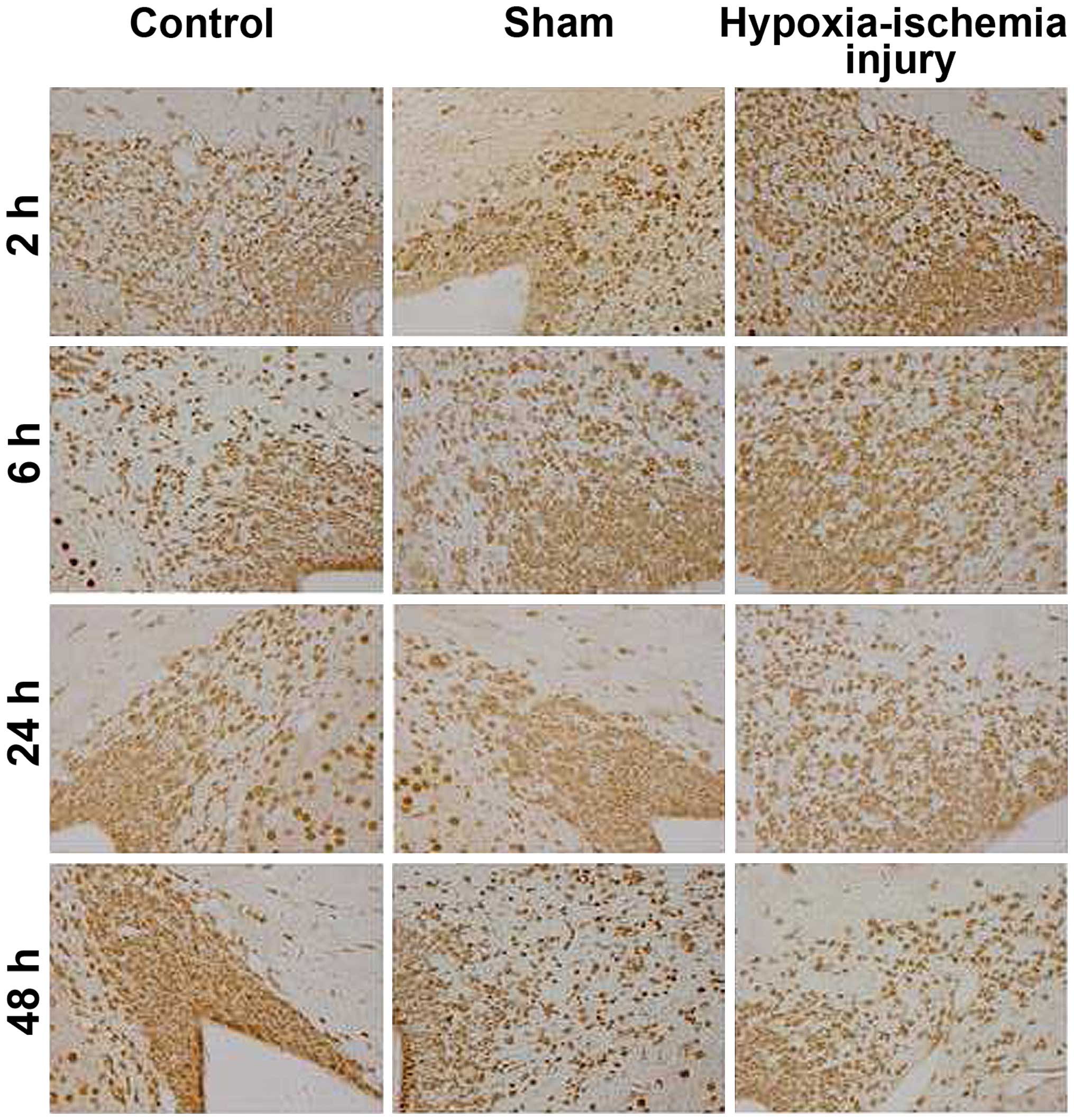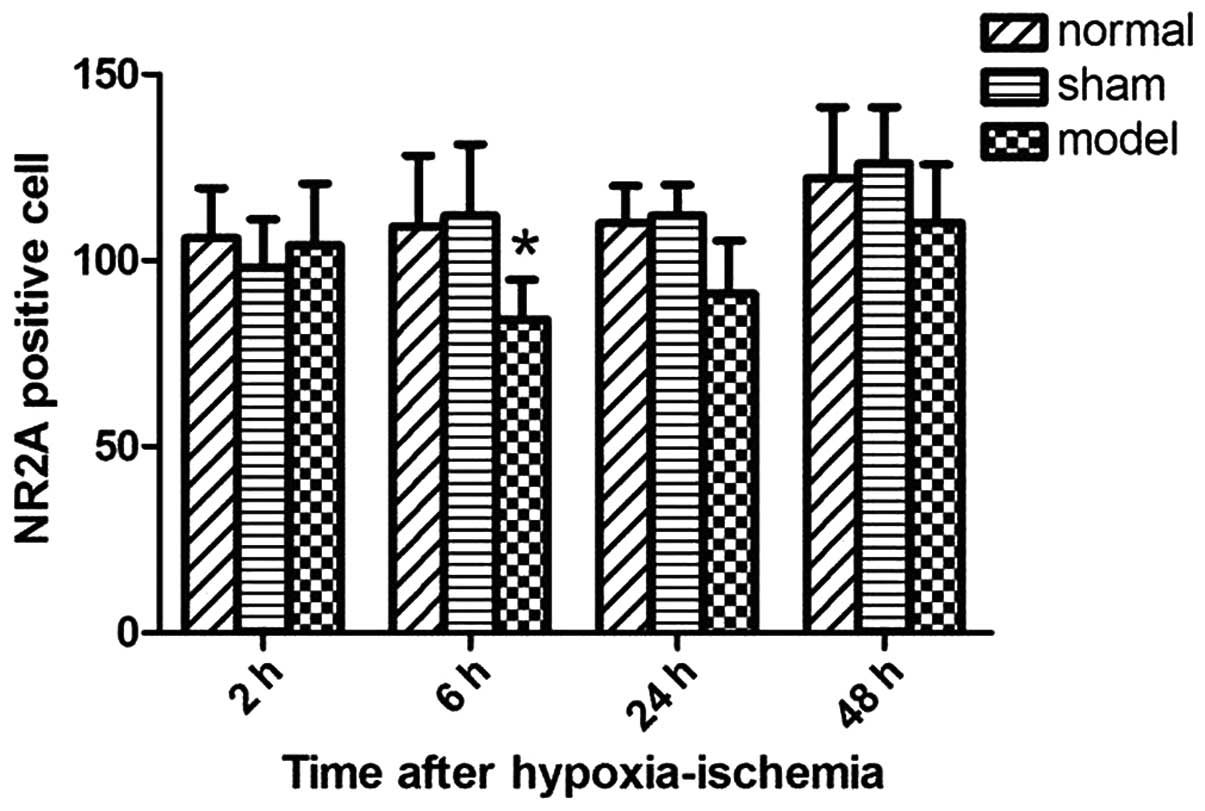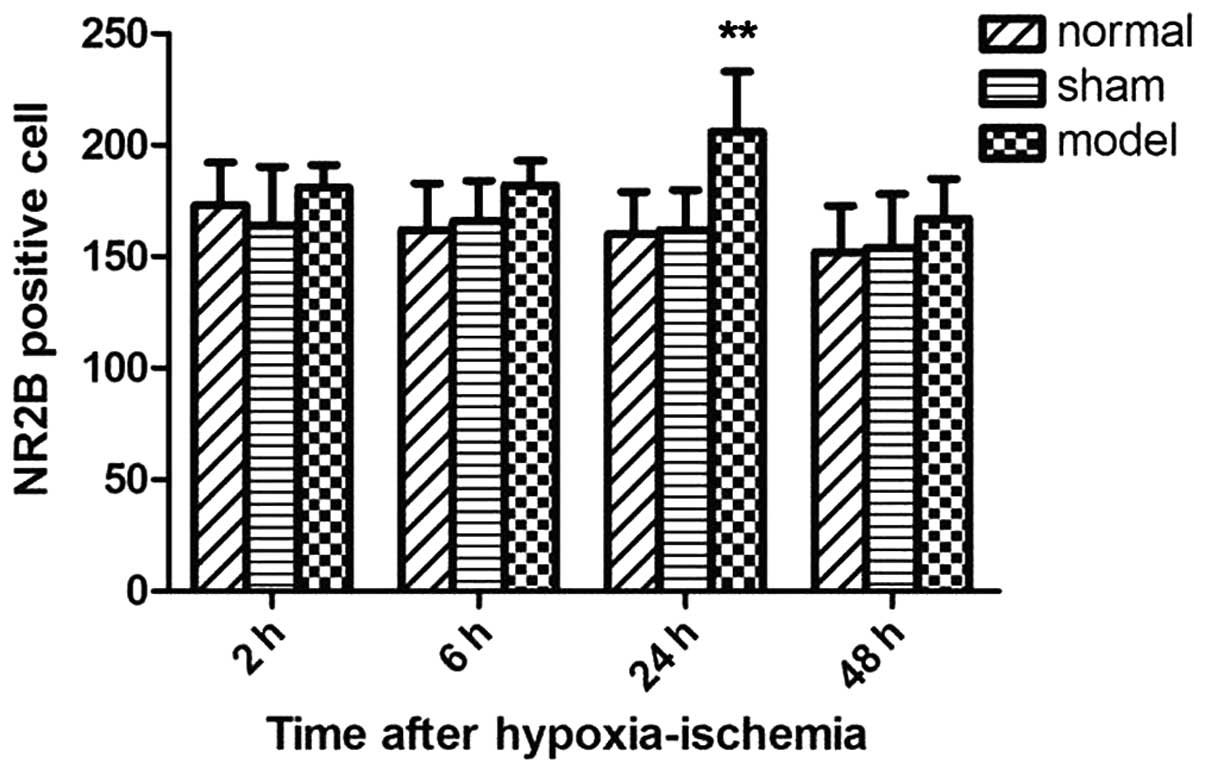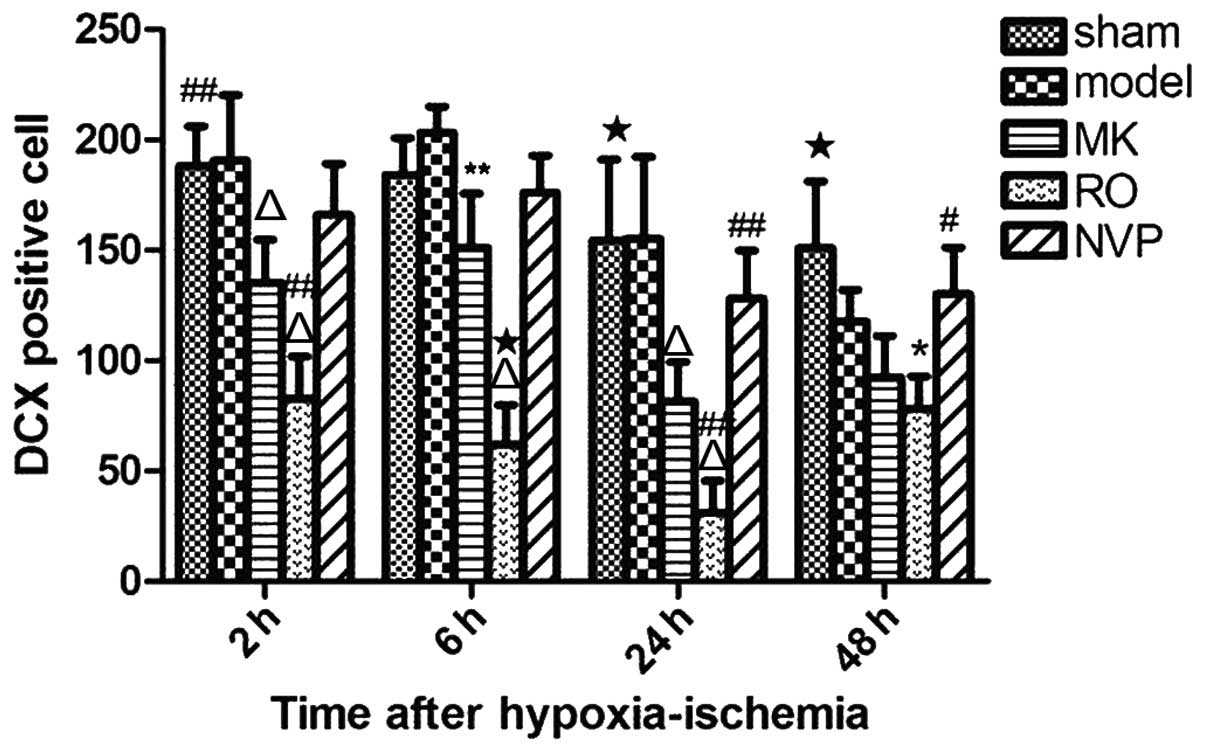|
1
|
Monk CS, Webb SJ and Nelson CA: Prenatal
neurobiological development: Molecular mechanisms and anatomical
change. Dev Neuropsychol. 19:211–236. 2001. View Article : Google Scholar : PubMed/NCBI
|
|
2
|
Charvet CJ, Owerkowicz T and Striedter GF:
Phylogeny of the telencephalic subventricular zone in sauropsids:
Evidence for the sequential evolution of pallial and subpallial
subventricular zones. Brain Behav Evol. 73:285–294. 2009.
View Article : Google Scholar : PubMed/NCBI
|
|
3
|
Curtis MA, Connor B and Faull RL:
Neurogenesis in the diseased adult human brain - new therapeutic
strategies for neurodegenerative diseases. Cell Cycle. 2:428–430.
2003. View Article : Google Scholar : PubMed/NCBI
|
|
4
|
Grote HE and Hannan AJ: Regulators of
adult neurogenesis in the healthy and diseased brain. Clin Exp
Pharmacol Physiol. 34:533–545. 2007. View Article : Google Scholar : PubMed/NCBI
|
|
5
|
Khodosevich K, Seeburg PH and Monyer H:
Major signaling path ways in migrating neuroblasts. Front Mol
Neurosci. 2:72009. View Article : Google Scholar
|
|
6
|
Nacher J and McEwen BS: The role of
N-methyl-D-asparate receptors in neurogenesis. Hippocampus.
16:267–270. 2006. View Article : Google Scholar : PubMed/NCBI
|
|
7
|
Cull-Candy S, Brickley S and Farrant M:
NMDA receptor subunits: Diversity, development and disease. Curr
Opin Neurobiol. 11:327–335. 2001. View Article : Google Scholar : PubMed/NCBI
|
|
8
|
Prybylowski K and Wenthold RJ:
N-Methyl-D-aspartate receptors: Subunit assembly and trafficking to
the synapse. J Biol Chem. 279:9673–9676. 2004. View Article : Google Scholar : PubMed/NCBI
|
|
9
|
Krapivinsky G, Krapivinsky L, Manasian Y,
Ivanov A, Tyzio R, Pellegrino C, Ben-Ari Y, Clapham DE and Medina
I: The NMDA receptor is coupled to the ERK pathway by a direct
interaction between NR2B and RasGRF1. Neuron. 40:775–784. 2003.
View Article : Google Scholar : PubMed/NCBI
|
|
10
|
Liu XB, Murray KD and Jones EG: Switching
of NMDA receptor 2A and 2B subunits at thalamic and cortical
synapses during early postnatal development. J Neurosci.
24:8885–8895. 2004. View Article : Google Scholar : PubMed/NCBI
|
|
11
|
Kim MJ, Dunah AW, Wang YT and Sheng M:
Differential roles of NR2A- and NR2B-containing NMDA receptors in
Ras-ERK signaling and AMPA receptor trafficking. Neuron.
46:745–760. 2005. View Article : Google Scholar : PubMed/NCBI
|
|
12
|
Fan H, Gao J, Wang W, Li X, Xu T and Yin
X: Expression of NMDA receptor and its effect on cell proliferation
in the subventricular zone of neonatal rat brain. Cell Biochem
Biophys. 62:305–316. 2012. View Article : Google Scholar
|
|
13
|
Ma ZL, Gu XP, Zeng YM and Zhang Y: Effect
of sodium hydroxybutyrate on the expression of hippocampal
N-methyl-D-aspartate receptor 2B subunit mRNA in neonatal rats with
hypoxic-ischemic insult. Ann Clin Lab Sci. 36:307–311.
2006.PubMed/NCBI
|
|
14
|
Sutcu R, Altuntas I, Eroglu E and Delibas
N: Effects of ischemia-reperfusion on NMDA receptor subunits 2a and
2b level in rat hippocampus. Int J Neurosci. 115:305–314. 2005.
View Article : Google Scholar : PubMed/NCBI
|
|
15
|
Savignon T, Costa E, Tenorio F, Manhães AC
and Barradas PC: Prenatal hypoxic-ischemic insult changes the
distribution and number of NADPH-diaphorase cells in the
cerebellum. PLoS One. 7:e357862012. View Article : Google Scholar : PubMed/NCBI
|
|
16
|
Hu M, Sun YJ, Zhou QG, Chen L, Hu Y, Luo
CX, Wu JY, Xu JS, Li LX and Zhu DY: Negative regulation of
neurogenesis and spatial memory by NR2B-containing NMDA receptors.
J Neurochem. 106:1900–1913. 2008. View Article : Google Scholar : PubMed/NCBI
|
|
17
|
Hu M, Sun YJ, Zhou QG, Auberson YP, Chen
L, Hu Y, Luo CX, Wu JY, Zhu DY and Li LX: Reduced spatial learning
in mice treated with NVP-AAM077 through downregulating
neurogenesis. Eur J Pharmacol. 622:37–44. 2009. View Article : Google Scholar : PubMed/NCBI
|
|
18
|
Vannucci RC and Vannucci SJ: Perinatal
hypoxic-ischemic brain damage: Evolution of an animal model. Dev
Neurosci. 27:81–86. 2005. View Article : Google Scholar : PubMed/NCBI
|
|
19
|
Lynch DR and Guttmann RP: Excitotoxicity:
Perspectives based on N-methyl-D-aspartate receptor subtypes. J
Pharmacol Exp Ther. 300:717–723. 2002. View Article : Google Scholar : PubMed/NCBI
|
|
20
|
Guerguerian AM, Brambrink AM, Traystman
RJ, Huganir RL and Martin LJ: Altered expression and
phosphorylation of N-methyl-D-aspartate receptors in piglet
striatum after hypoxia-ischemia. Brain Res Mol Brain Res.
104:66–80. 2002. View Article : Google Scholar : PubMed/NCBI
|
|
21
|
Gurd JW, Bissoon N, Beesley PW, Nakazawa
T, Yamamoto T and Vannucci SJ: Differential effects of
hypoxia-ischemia on subunit expression and tyrosine phosphorylation
of the NMDA receptor in 7- and 21-day-old rats. J Neurochem.
82:848–856. 2002. View Article : Google Scholar : PubMed/NCBI
|
|
22
|
Gascón S, Sobrado M, Roda JM,
Rodríguez-Peña A and Díaz-Guerra M: Excitotoxicity and focal
cerebral ischemia induce truncation of the NR2A and NR2B subunits
of the NMDA receptor and cleavage of the scaffolding protein
PSD-95. Mol Psychiatry. 13:99–114. 2008. View Article : Google Scholar
|
|
23
|
Gascón S, Deogracias R, Sobrado M, Roda
JM, Renart J, Rodríguez-Peña A and Díaz-Guerra M: Transcription of
the NR1 subunit of the N-methyl-D-aspartate receptor is
downregulated by excitotoxic stimulation and cerebral ischemia. J
Biol Chem. 280:35018–35027. 2005. View Article : Google Scholar
|
|
24
|
Monyer H, Burnashev N, Laurie DJ, Sakmann
B and Seeburg PH: Developmental and regional expression in the rat
brain and functional properties of four NMDA receptors. Neuron.
12:529–540. 1994. View Article : Google Scholar : PubMed/NCBI
|
|
25
|
Yang Z and Levison SW: Hypoxia/ischemia
expands the regenerative capacity of progenitors in the perinatal
subventricular zone. Neuroscience. 139:555–564. 2006. View Article : Google Scholar : PubMed/NCBI
|
|
26
|
Arvidsson A, Kokaia Z and Lindvall O:
N-methyl-D-aspartate receptor-mediated increase of neurogenesis in
adult rat dentate gyrus following stroke. Eur J Neurosci. 14:10–18.
2001. View Article : Google Scholar : PubMed/NCBI
|
|
27
|
Luk KC, Kennedy TE and Sadikot AF:
Glutamate promotes proliferation of striatal neuronal progenitors
by an NMDA receptor-mediated mechanism. J Neurosci. 23:2239–2250.
2003.PubMed/NCBI
|
|
28
|
Deisseroth K, Singla S, Toda H, Monje M,
Palmer TD and Malenka RC: Excitation-neurogenesis coupling in adult
neural stem/progenitor cells. Neuron. 42:535–552. 2004. View Article : Google Scholar : PubMed/NCBI
|
|
29
|
Joo JY, Kim BW, Lee JS, Park JY, Kim S,
Yun YJ, Lee SH, Lee SH, Rhim H and Son H: Activation of NMDA
receptors increases proliferation and differentiation of
hippocampal neural progenitor cells. J Cell Sci. 120:1358–1370.
2007. View Article : Google Scholar : PubMed/NCBI
|
|
30
|
Mochizuki N, Takagi N, Kurokawa K, Kawai
T, Besshoh S, Tanonaka K and Takeo S: Effect of NMDA receptor
antagonist on proliferation of neurospheres from embryonic brain.
Neurosci Lett. 417:143–148. 2007. View Article : Google Scholar : PubMed/NCBI
|
|
31
|
Toriumi K, Mouri A, Narusawa S, Aoyama Y,
Ikawa N, Lu L, Nagai T, Mamiya T, Kim HC and Nabeshima T: Prenatal
NMDA receptor antagonism impaired proliferation of neuronal
progenitor, leading to fewer glutamatergic neurons in the
prefrontal cortex. Neuropsychopharmacology. 37:1387–1396. 2012.
View Article : Google Scholar : PubMed/NCBI
|
|
32
|
Nacher J, Alonso-Llosa G, Rosell DR and
McEwen BS: NMDA receptor antagonist treatment increases the
production of new neurons in the aged rat hippocampus. Neurobiol
Aging. 24:273–284. 2003. View Article : Google Scholar
|
|
33
|
Maekawa M, Namba T, Suzuki E, Yuasa S,
Kohsaka S and Uchino S: NMDA receptor antagonist memantine promotes
cell proliferation and production of mature granule neurons in the
adult hippocampus. Neurosci Res. 63:259–266. 2009. View Article : Google Scholar : PubMed/NCBI
|
|
34
|
Li M, Zhang DQ, Wang XZ and Xu TJ:
NR2B-containing NMDA receptors promote neural progenitor cell
proliferation through CaMKIV/CREB pathway. Biochem Biophys Res
Commun. 411:667–672. 2011. View Article : Google Scholar : PubMed/NCBI
|
|
35
|
Sans N, Petralia RS, Wang YX, Blahos J II,
Hell JW and Wenthold RJ: A developmental change in NMDA
receptor-associated proteins at hippocampal synapses. J Neurosci.
20:1260–1271. 2000.PubMed/NCBI
|
|
36
|
Liu L, Wong TP, Pozza MF, Lingenhoehl K,
Wang Y, Sheng M, Auberson YP and Wang YT: Role of NMDA receptor
subtypes in governing the direction of hippocampal synaptic
plasticity. Science. 304:1021–1024. 2004. View Article : Google Scholar : PubMed/NCBI
|
|
37
|
Massey PV, Johnson BE, Moult PR, Auberson
YP, Brown MW, Molnar E, Collingridge GL and Bashir ZI: Differential
roles of NR2A and NR2B-containing NMDA receptors in cortical
long-term potentiation and long-term depression. J Neurosci.
24:7821–7828. 2004. View Article : Google Scholar : PubMed/NCBI
|
|
38
|
Liu Y, Wong TP, Aarts M, Rooyakkers A, Liu
L, Lai TW, Wu DC, Lu J, Tymianski M, Craig AM, et al: NMDA receptor
subunits have differential roles in mediating excitotoxic neuronal
death both in vitro and in vivo. J Neurosci. 27:2846–2857. 2007.
View Article : Google Scholar : PubMed/NCBI
|
|
39
|
Chen M, Lu TJ, Chen XJ, Zhou Y, Chen Q,
Feng XY, Xu L, Duan WH and Xiong ZQ: Differential roles of NMDA
receptor subtypes in ischemic neuronal cell death and ischemic
tolerance. Stroke. 39:3042–3048. 2008. View Article : Google Scholar : PubMed/NCBI
|




